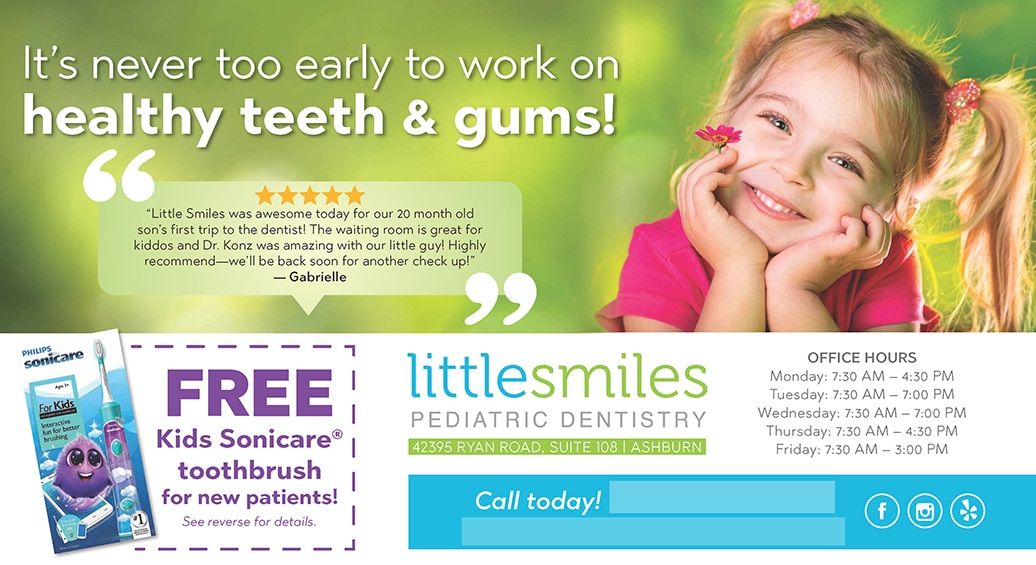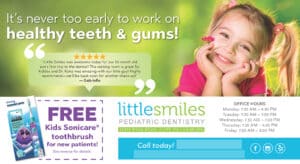
by Todd Boak | Feb 14, 2024 | healthcare marketing, marketing
In an era inundated with digital marketing, the resurgence of direct mail might seem surprising. However, for businesses interested in new mover marketing, this traditional tactic has resurfaced as a potent tool. Todd Boak, Partner at Harris & Ward, underscores the impact of direct mail on new movers, particularly for dental practices. He notes,
Direct mail targeting new movers can be incredibly effective for dental practices. It allows them to reach a highly targeted audience at a crucial time when they are actively seeking new service providers.
One remarkable case study highlighting the effectiveness of direct mail targeting new movers comes from a dental practice in Ashburn, VA, as detailed by PostcardMania. Despite spending $6,664 on the campaign, including postage, the practice achieved a staggering 125% return on investment (ROI), translating to earnings of roughly $15,000. This success story underscores the potential of direct mail in capturing the attention and patronage of new movers.
New Mover Marketing has Many Advantages

1. Targeted Reach
Direct mail enables dental practices to target people who have recently moved with precision. By accessing mailing lists of recent movers in their area, practices can tailor their messages to this specific demographic. This targeted approach increases the likelihood of engagement and conversion, as the recipients are more likely to be in need of dental services in their new area. By focusing their efforts on this specific group, practices can maximize the effectiveness of their new mover marketing campaigns and increase their ROI.
2. Personalization
Direct mail (new mover marketing) allows for a high level of personalization, which is crucial in engaging new movers. By addressing them by name and offering relevant services, dental practices can establish a connection that is more likely to result in a positive response. Personalized mailers can include special offers or discounts tailored to the individual recipient, making them feel valued and increasing the likelihood of conversion. This personal touch sets direct mail apart from other forms of marketing and can help practices stand out in a crowded marketplace.
3. Tangible Impact
Unlike digital ads that can be easily ignored or forgotten, direct mail has a tangible presence that makes it harder to overlook. A well-designed postcard or flyer can leave a lasting impression on new movers, prompting them to consider the dental practice for their needs. The physical nature of direct mail makes it more memorable than digital marketing efforts, increasing the likelihood that recipients will act on the information presented to them. This tangible impact can lead to higher conversion rates and a greater return on investment for dental practices.
4. Timing
Direct mail allows dental practices to reach new movers at a critical time when they are actively seeking out new services. Moving to a new area often involves finding new healthcare providers, including dentists. By being among the first to make an impression, practices can increase their chances of securing new patients. Direct mail allows practices to capitalize on this window of opportunity and establish themselves as viable options for new movers. By reaching new movers at the right time, practices can increase their chances of success and grow their patient base more quickly.
5. Measurable Results
One of the key advantages of new mover marketing is its trackability. Dental practices can easily track the success of their direct mail campaigns by analyzing response rates and ROI. This data allows practices to refine their targeting and messaging for future campaigns, increasing their effectiveness over time. Direct mail provides clear, measurable results that enable practices to make informed decisions about their marketing strategies. By tracking the results of their campaigns, practices can identify what works and what doesn’t, allowing them to optimize their marketing efforts for maximum impact.
In conclusion, direct mail is experiencing a resurgence in 2024, particularly for businesses targeting new movers like dental practices. New mover marketing provides precise targeted reach, personalization, tangible impact, timely delivery, and measurable results make it a compelling marketing tool. As Todd suggests, “For dental practices looking to attract new movers, direct mail can be a game-changer, offering a high ROI and the potential for long-term patient relationships.” With its ability to deliver targeted, personalized messages to a receptive audience, direct mail is proving to be a valuable asset in the marketing arsenal of dental practices and other businesses seeking to attract new movers.
Interested in learning how to automate new mover marketing efforts to guarantee new patient growth? Click here to learn more!

by Todd Boak | Aug 29, 2022 | marketing, Dental Marketing
How to grow your orthodontic practice
There will always be difficulties when expanding an orthodontics practice, but if you’re willing to learn from others’ experiences, it will be easier to manage.
The motivations that influence how practices operate tend to vary from owner to owner. Some may prioritize efficiency, while others may prioritize quality. Others may prioritize balance and quality of life for their team over revenue or efficiency. Not every practice owner is focused primarily on growing their practice in size, but being growth-oriented is still important.
So where should you start?
Organic Search Presence (SEO)
Are you only using word-of-mouth marketing to tell others about your orthodontic practice? While this can be powerful, it shouldn’t be your only marketing method. Orthodontic marketing is all about attention to detail and authentic engagement.
In today’s digital age, you have a ton of resources right at your fingertips, so use them. Start with your orthodontic website, and update the content to include a page specifically for orthodontics. Be sure to curate content specifically for each of your unique services. Google wants you to be detailed and engaging.
Make sure current and prospective patients know what to expect from your services by describing them and addressing FAQs. Post reviews and testimonials to give others a better idea of what you offer.
Once your content is ready, you can start optimizing your online presence for better search engine results. Use keywords, phrases, and images in your website, blogs, and social media content to target your ideal audience. Google will reward you with higher search engine results if the information you provide is relevant and helpful. Orthodontic SEO is a crucial part of a modern orthodontic practice’s marketing strategy.
Want to learn more about orthodontic seo?
Social Media
A recent study has shown that orthodontists who use social media and have a practice website are more likely to get new patients. The study also showed that orthodontists should post information or run social ads in the evening, when patients and their parents are more likely to be using social media.
Utilize social media to its fullest capabilities by posting at appropriate times. Keep in mind that content is king, and that posts with authentic content that emotionally connect with your audience are more likely to be successful. Provide value to your audience, but be careful of over-posting. Monitor where new patients are coming from, as this can help you tailor your social media posts.
Reviews
Patients are increasingly using the internet to research doctors and dentists, with 74.6% of patients looking online for information on medical care, according to PatientPop. Furthermore, 59% say that online reviews influence their decision on which provider to choose.
It’s not enough to just have patient reviews – they need to be good. Nearly half of consumers (47%) won’t use a business that has less than 4 stars, according to BrightLocal.
Reviews are important for local search rankings. If you don’t have enough reviews, or if your reviews are not frequent enough, or if you’re not reviewed on multiple sites, you’re not giving Google the information it needs to rank your practice higher. This means that without reviews, your practice will have trouble attracting new patients.
Use Online Scheduling Tools

No-show and cancellation rates are extremely important, as they are the primary drivers for your collections. Part of patient education is teaching patients to keep track of appointments. In a 2013 study, 27.8% of respondents said they relied on memory, and 40% of respondents said forgetting was the reason for missed appointments in the past.
As part of your treatment plan delivery, your staff should ask patients about what scheduling reminders work well for them. This could be intrinsically tied to a patient’s lack of understanding about the treatment they are receiving, or why that treatment and showing up to their appointment is important.
If you are experiencing poor attendance and cancellations, you may want to reassess your scheduling tools. Do you use an online scheduler? How about a text reminder service? Identifying where the problems are with scheduling can help improve your operational and treatment efficiency, both of which are important for your bottom line.
Community Engagement
It is important to use social media, but it is not a substitute for getting to know your patients in person. Do everything you can to become part of your community. Attend local events. Get to know other business owners. Consider joining groups like the local Chamber of Commerce. This will make you more recognizable and people will see you as a good guy instead of just another orthodontist.
To reach more people in your community, plan a special day just for them! Offer free consultations, screenings, and a Q&A session, as well as family games. You can’t grow your local presence unless you’re actively involved, so this is a great way to make an impact.
Grow your orthodontic practice one step at a time.
You can’t grow a successful orthodontic practice overnight, but there are steps you can take to scale your growth strategically. The tips above can help you reach more people, grow your knowledge, and establish your team as community leaders.
Focus on your digital marketing efforts first. It’s easy to blend in with your competition by mistake. Be intentional and build a simple and solid website. Most marketing campaigns point back to your website so ensure it showcases you and your staff appropriately. Modern consumers see right through stock photography and uninformative content.
Choose the right partnerships. You can outsource your digital marketing efforts to a reliable agency resource. But, don’t think that removes all marketing from your dental practice. It’s important to own your local presence, doctor referrals, and relationships with your patients/parents.

by harrisward | Apr 1, 2022 | marketing
8 Benefits of Digital Marketing for Chiropractors
68% of online experiences begin with a search engine. Search Engine Optimization (SEO) is just one form of digital marketing, but the message is clear, most people find new services and products online.
We’re living in a digital age, and using that to a business’s advantage has never been more important.
As a chiropractor, you might be wondering if there are enough benefits of digital marketing to warrant putting effort into it. Read on to find out about them!
1. Increase Visibility
The clearest benefit of digital marketing for chiropractors is to increase visibility. If you don’t rely on digital content to market your services at all, you’re likely using billboards, advertisements posted on the streets, and word of mouth.
While there’s something to be said for that type of advertising, you’ll never get more visibility than making sure you can be found online.
Digital marketing also helps your website become more user-friendly due to SEO best practices, which is huge for navigation and ease of access for patients.
2. Target New Local Patients
Local SEO is a great online marketing tactic, especially for a business like a chiropractor. Chances are, you want to target people in your local area since those are the ones most likely to visit you.
Utilizing keywords such as “chiropractor near me” and “chiropractor in town” can help boost your website in the local SEO sphere and specifically find people who are close by. SEO is all well and good on a global level, but someone a thousand miles away isn’t likely to come and visit you every week or two just for your services.
3. Stay Connected
It’s not just finding new patients that digital marketing can help with — it’s staying connected with old ones.
If you make yourself easy to find online, you can have contact information listed on your website so no one ever struggles to get in touch. One quick Google search and they’re there.
You can use social media to stay connected with current patients. A lot of people are averse to phone calls or working during business hours, so opening up Facebook messages might be really appreciated. You can also handle any feedback or complaints this way.
4. Advertise Your Services and Qualifications
When people are looking for a new chiropractor, they’re looking for someone who’s qualified and can achieve the results that they want. As you employ digital marketing in your tactics, make sure you’re selling yourself.
Use your website to tell people how much experience you have and the things you can do. You can set up different pages for different areas of the body and potential results, talking about your tactics to draw people in by targeting the exact issues they might have.
This will instill confidence and help you to get new clients, as they’ll then feel you’re the best person for the job.
5. Help People See the Benefits
When people start looking into chiropractors, they might not be specifically looking for one at the start. Instead, they might be searching around to see the benefits and looking to decide if the process is truly worth it for them.
Target some of your digital content towards showing them the benefits. You can link to authoritative studies (which always helps boost SEO) or conduct your own research, which may even help get backlinks to your study from other sites.
This makes you seem like an authority on the subject and, more importantly, it will help people decide they want to see a chiropractor while already right on your site.
6. Less Expensive
Some other forms of more traditional marketing, such as billboards, can be expensive. Billboards themselves can cost up to $14,000 per month in populated areas!
Digital marketing isn’t likely to set you back this much and if you do put in this much effort, the benefits will outweigh the cost. While some of it is an investment, such as email domains and SEO tools, it should be relatively inexpensive — especially as you can do a lot of the work yourself.
Even outsourcing it to an SEO expert isn’t likely to set you back as much as traditional marketing methods.
7. Station Yourself as the Expert
One of the huge advantages of online marketing is that it makes it easy to station yourself as an expert chiropractor because you can take a look at competitors and see how to get ahead.
Some SEO tools can even run checks to see what keywords they’re ranking for that you aren’t.
Getting ahead of the competition is necessary for any business, and people likely have a few chiropractors to choose from. Make sure you’re clearly the best choice.
8. Use Emails to Directly Target People
Using emails to target people is another great benefit of digital marketing. You can let people know if you’re running any specials (perhaps a new patient offer?) or if there are any changes, and you don’t have to worry about if they’re checking the website or not.
Instead, you can send an email and be sure it got to them with all of the information they need right there. Just make sure you optimize your emails so they don’t go right into the spam folder!
There Are Many Benefits of Digital Marketing for Chiropractors
The truth is that there are many great benefits of digital marketing for any business, and for chiropractors it’s especially important. Online marketing can help you get ahead of the competition, target your services better, and stay in touch with current patients to ensure they feel valued and stay loyal to you.
Do you need help with digital marketing for your business from specialists? Contact us today and let’s see what we can do.

by harrisward | Dec 15, 2021 | marketing
7 Awesome Content Marketing Tips for Dentists
There are over 201,117, practicing dentists in the United States! That’s a lot of competition.
Getting new patients for your dental practice is not always easy. The best way to get new patients for your practice is to have a marketing strategy in place so that people can get to know more about your practice and the benefits of coming to visit you whenever they have dental issues.
Getting the word out about your practice is not always easy and it can be challenging if you don’t know exactly where to start. The good news is that once you know exactly what to do, you can reap the rewards very quickly. Here is a look at some of the top content marketing tips you can use to grow your dental practice.
1. Create Good Website Content
The content of your website needs to be useful to those who visit but it also needs to be engaging as well. This means that your content should grab your readers from the beginning and make them want to stay to finish reading. You can do this by using engaging titles and introductions for your blog post content.
Make sure that your website is easy to navigate and people can find additional content easily. When you do this it will increase your page views and the number of shares that you get. Google will begin to see your website as valuable because people are sharing your content.
2. Know Your Target Audience
Social media is an important part of your content marketing strategy. Understanding where your target market audience likes to hang out on the internet is one of the main ways in which you can successfully market your content.
You should try to find out which social media platforms your audience prefers. You can take a look at what other practices are doing to decide which social media platforms are most engaging for your audience.
There is no need to reinvent the wheel. Look at the type of content that those who are successful at social media marketing are already using and then recreate it uniquely.
3. Answer the right questions
One of the most important things that your content needs to focus on is answering the right questions. When people are browsing the internet for dental answers you want to ensure that your website is amongst those that can provide a suitable answer.
Answering questions concisely and informatively is one of the best ways to ensure that your audience’s thirst for information is satisfied.
Having the right answers can also help your SEO. You may find that you end up in the featured snippet section or related questions section of search engine results. All of this will ensure that your content is found on Google and that people share it with others.
4. Be Consistent
Consistency is the key to keeping your audience engaged and having a cohesive brand voice.
However, consistency is all about producing quality content as opposed to quantity. This means that you need to find a schedule that works for you and stick to it. This is the best way to ensure that you get into a rhythm for content production and content publishing.
5. Get a Content Calendar
To help keep your content organized, set up a content calendar. Your content calendar will help you plan for content a few weeks in advance.
Take a close look at the type of content that you want to create and the strategies that you want to use to publish them, then plan them out with a calendar. This will help you to stay consistent, grow your audience, and get more patients.
6. Use Call to Action Effectively
Call to action must be a part of any content marketing plan. You can use a call to action to direct your audience and tell them what to do after they have interacted with your content.
You should never assume that people know what to do next once they have finished consuming your content. Direct them to read another post or follow you on social media. This is an important step that when done right can lead to people consuming a lot more of your content.
7. Create Different Styles of Content
Varying your content style is essential especially when you are marketing on your website and also on social media. This means that in addition to informative blog posts you need to create other styles of content.
You can try creating step-by-step guides or how-to videos that assist people with their dental issues. Consider doing a podcast or starting a YouTube channel as well. All these are great avenues where you can connect with more people and drive traffic to your website and your dental practice.
Put Content Marketing Tips to Work
The content marketing tips given here can grow your practice tremendously. Getting your content marketing right is one of the most important things you can do to help you get more patients.
Content is often said to be king on the internet. However, no matter how good your content is, if you don’t know how to use it effectively then you won’t reap the rewards.
This means that you have to ensure that you market your content effectively and keep your audience coming back for more. This is not always easy but it is possible.
If you would like help with content marketing please do not hesitate to contact us.

by harrisward | Jun 10, 2021 | Harris & Ward, marketing
Are you struggling to draw new clients to your dental clinic, law firm, or small business? You’re not alone. In fact, about 65% of businesses struggle to draw in leads and web traffic.
With the right digital marketing services, you don’t have to struggle! Instead, you can give your business the boost it needs.
Not sure where to start? Keep this marketing services list handy. With these online business marketing strategies, you can set your business up for success.
You can generate more brand awareness, acquire more website traffic, and gain new leads. Then, you can improve your ROI and start growing your business.
Set your business up for growth and success! Get started by learning more about these marketing services for startups today.
1. Branding
Before you start using the rest of this marketing services list, it’s important to consider your brand. Your brand will set your business apart from others within your niche. Without a distinct brand, consumers might not recall your business.
In fact, it takes an average of six impressions before you build even a smidge of awareness. In order to build brand recognition, consistency over time is key.
You can create brand guidelines to ensure your brand remains consistent across all marketing channels.
In fact, consistency could increase revenues by up to 23%.
When developing your brand, take a moment to think about your target audience. What do they care about? Shared values account for about 64% of brand relationships.
Then, determine your:
- Vision statement
- Mission statement
- Unique value proposition
- Logo
- Color palette
- Font styles
- Imagery styles
- Voice
- Tone
- Personality
Keep your branding consistent as you explore the rest of these marketing services.
2. Web Design and Development
In some cases, your website is the first time consumers interact with your brand. It’s important to make a strong first impression. If your website is old and outdated, consumers might leave.
They’ll take their business elsewhere instead.
Consider hiring an experienced web design and development company. They can create an eye-catching, wow-worthy website that will draw consumers in. Your website will host the content you create as part of your lead generation strategy.
Work with a design agency that can create a mobile-optimized website for your business.
More people are exploring websites from their smaller phones and tablets. If your website isn’t optimized, you could lose business. Consumers might struggle to explore your site from their smaller screens.
They’ll remember their negative user experience and maybe even tell others.
3. Content Creation
Start creating engaging, informative content for your website. Content creation is an important step in your online business marketing strategy. You can create content to demonstrate your experience and expertise.
Informative, helpful content will help consumers recognize your value. You can show people you understand the problems they’re facing. Then, you can create content that offers them an easy solution.
You can create different forms of content, including blog posts, articles, eBooks, and infographics. Then, you can optimize your content for search engines to help more people find your business online.
4. Search Engine Optimization
Search engine optimization (SEO) can help your website content appear higher on Google and Bing. A higher ranking will position you in front of more customers. When someone searches for your product or service, your website might appear.
About 70% of all experiences online start on a search engine like Google. SEO can help you boost brand awareness and generate more website traffic. Once you draw people to your website, you can use your content to convert them into leads.
Only 0.78% of Google users look beyond the first page of a search, though. Without SEO, you might not reach customers.
Consider working with an experienced SEO agency. They can help you create content with SEO in mind. Then, they can optimize your content based on the keywords consumers use in a search.
Google’s search algorithm changes constantly. If you’re not up-to-date with the latest trends, your ranking could drop. Finding an agency that offers digital marketing services can give your business an advantage.
You can rank ahead of the competition and draw in new leads.
5. Custom Photography and Videography
Consumers can now recognize stock photography on sight. Stock images could make your brand look ingenuine. Instead, work with an agency that can capture custom photography for your brand.
You can use your photos for social media, your website, and other branded materials.
Consider creating engaging videos as part of your content creation strategy, too. A content creator small business expert can help you create attention-grabbing videos for your website.
6. Pay-Per-Click Advertising
Pay-per-click (PPC) advertising can also help you reach more consumers online. Consider creating text and visual ads. You can use ads to direct more people to your website.
These ads can appear on social media platforms, other websites, and search engine pages.
Once people click on your ad, they’ll appear on a landing page on your website. Then, you can convert those visitors into leads.
7. Social Media Marketing
Social media marketing is a great way to keep your customers engaged. Let them know about upcoming deals or events. You can also let them know about your latest accomplishments.
For example, a law firm can mention new additions to the team or accolades they received. A dentist’s office can share before and after photos of their patients.
As people start commenting on your posts, make sure to comment back.
Consider working with influencers in your industry, too. Influencers can help spread the word about your business. You can boost your brand’s visibility and draw in fresh leads.
Give Business a Boost: 7 Digital Marketing Services for Dental Clinics and SMEs
Don’t fall behind the competition this year. Instead, consider these seven digital marketing services. With these marketing services, you can wow your customers and draw in fresh leads.
Get ready to stand out from the crowd with these online business marketing tips today!
Need help developing your digital marketing strategy? We’re here to help.
Contact us today to discuss your web design, SEO strategy, and more!

by harrisward | Mar 31, 2021 | Harris & Ward, marketing
There are around 31 million small businesses just in the US. That’s to say nothing about foreign businesses that operate in the same space, a common problem for e-commerce businesses and freelancers. In short, you can come up against a lot of competition depending on your industry.
That makes marketing an essential component in any small business plan. The challenge, of course, is how you can make your small business marketing succeed in the face of that competition. Keep reading for tips that can help you get your marketing in the right place.
Make a Plan
Marketing is one area where you can’t throw it together as you go. You need a marketing strategy that informs a marketing plan. That starts with defining your target market.
What kind of person or business represents your ideal customer? What characteristics define that person or business?
Let’s say you run a dental practice. Is your ideal customer a family or someone looking for cosmetic dentistry?
If you want family business, you structure your marketing plan around things like preventative care for kids and essential procedures. If you focus on cosmetic dentistry, your target market is likely adults with disposable income. For those customers, you focus your marketing on lifestyle and aesthetics.
Once you define your ideal customer, you build a plan around them and their needs or wants.
Set a Budget
Marketing can and will eat as much money as you throw at it, regardless of results. That means you must set a sustainable marketing budget before you begin.
Sustainable means different things to different businesses. For a cash-strapped business, that might mean a couple of hundred bucks a month. For a high-profit business, it can mean thousands of dollars.
Rather than think of your budget in numerical terms, think of it as a percentage of revenue. Assuming you can afford it, a good rule of thumb is around 7% of your revenue. If you can’t afford that, crunch the numbers until you find a number you can afford and work with that amount.
Now, let’s look at specific things you can do.
Professional Website
Your business operates in an Internet-connected world. That means you need a website as a focal point for your business marketing efforts. More than that, though, you need a professional-grade website.
Customers these days regularly interact with websites built by Fortune 500 companies that poured millions of dollars into their site development. Those websites inform customer expectations about look and performance in any given industry. While you can’t compete with the budgets of those companies, you can get a website built by professional website developers.
That means you end up with a site that performs well and meets customer expectations for your industry. It also means you get a website that natively offers any industry-specific features you need.
SEO
It’s difficult to separate search engine optimization from any small business marketing plan, as it’s a core part of digital marketing. SEO is a set of tactics that help your pages on your website rank better in search results. If your site’s pages don’t rank well, people looking for businesses online simply won’t find you.
The most familiar elements of SEO for most business owners are keywords and link building. In essence, keywords are specific terms that people use when searching for products or services. By incorporating keywords specific to your business, you improve your odds of ranking well.
If you focus on a local market, location-specific keywords can help you even more.
Link building takes on two main forms: internal and external. Internal linking focuses on creating a web of links on your site between related content, which tells search engines that your site focuses on a specific product or service. External linking focuses on connecting your site to high-quality resources, which demonstrates you understand your own industry.
Custom Images
Many businesses rely on stock images for their websites. This is a cost-effective tactic, but it’s not an ideal one. There are a finite number of stock images for any given industry, which means you run the risk of using the same images as a competitor.
Custom images help you overcome this problem by ensuring originality. As a bonus, people respond to images in a more meaningful way than they do solely to text on the screen.
Video
Video does the same thing for your that custom images do, but even more powerfully. They let you speak directly to your visitors, which can help solidify an emotional connection. People also recall information from videos better than information they get from skimming written content.
Video has another advantage. It’s an ideal way for you to reinforce your brand message.
You can do slice-of-life videos from inside your company or office or offer messages from the owner. Assuming your brand message is authentic, it’ll shine through in the videos. If people liked your brand messaging before, you’ll reinforce that emotional connection.
Social Media
Let us not forget the 800-pound gorilla that is social media. Very few businesses possess the staff, budget, or know-how to maintain a presence on every social media site. Yet, a small business social media presence is essential.
Dig down into the benefits and pitfalls of different social media platforms. Then pick a maximum of two platforms to focus on as a starting point. Look for sites that play to your business’s strengths.
If your business has lots of products, an image-focused site makes sense. If your business relies on personality and in-person services, lean more into sites that let you leverage those factors.
Small Business Marketing and Your Business
Small business marketing matters as much as big business marketing for the long-term survival of your business.
That means you need a plan that focuses on your ideal customers and a budget you can sustain. It also means leaning in to the reality of digital marketing.
You need a pro website with solid SEO. Your marketing should use custom images when possible, and video if your budget supports it. Your business also needs a focused presence on social media.
Harris & Ward specializes in small business digital marketing and site development. Have a larger project? We offer enterprise SEO and marketing services.














